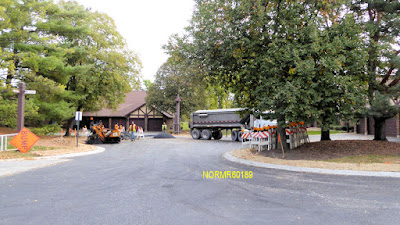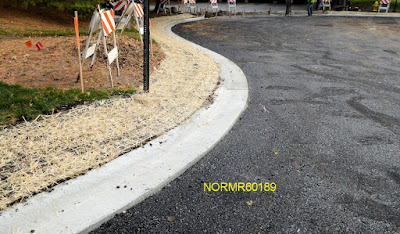(See Notes) - Added Medicare Premiums 2016
In any HOA, some of the owners and residents are retirees. The incomes of retirees are determined by pensions, savings and social security benefits. I'm going to quote a well known financial writer "Social Security wasn't designed to be an investment vehicle for retirees; instead, it had the goal of providing at least a modest supplement to retirees' incomes."
The important word above is "supplement." There was no intention for retirees to live entirely from social security. According to the Social Security Administration "Social Security made up 50 percent or more of the retirement income of 66 percent of Americans age 65 and older in 2009, up from 64 percent in 2008. However, in August 2011 the SS Administration stated that "more than a third of retirees (35 percent) receive 90 percent or more of their income as a monthly payment from the Social Security Administration."
More recent data indicates that Social Security benefits represents 90 percent or more of income for about 44% of all retirees who receive benefits. (2012 data, released 2014). Intended or not, for about nearly half of retirees social security income has become their main source of income.
Currently, about 12.5 % of Americans are retired and receiving SS benefits. The SS Administration estimates that 97% of all Americans aged 60 to 89 will receive such benefits. Furthermore, those benefits are modest. "The average Social Security retirement benefit in June 2015 was $1,335 a month, or a bit over $16,000 a year." For retirees over the age of 65 the median benefit was $19,276 or $1,606 per month in 2012. Single retirees (including widows and widowers) over 65 received $1,183 monthly in SS benefits while married retired couples received $2,029.
Using Median data can be deceptive. Here are some additional data using quintiles, The advantage of quintile data is it divides the population into five groups. Those groups range from the lowest 20% income via SS benefits to the highest 20%. This provides a better indicator of the income extremes. Here is same information presented in the paragraph above, but for a one-person beneficiary family. This includes all SS income for all beneficiaries aged 65 or older.
- Lowest Quintile: $791 per month.
- Highest Quintile: $1,483 per month.
It is impossible to determine the specific sources of income for the elderly in any HOA, or their net worth. That information is personal and private. The financial status of retirees is also determined by where they live, their earnings while performing their duties during their working years, and their current health.
But figuring out some of this isn't rocket science. The deterioration in retirement income since 2008 should be a cause for concern for all of us. The financial panic of 2008 wiped out a lot of the retirement saving of those over 55 at the time. Extremely low interest rates on cash savings and low bond returns have also taken a toll on the financial health of all of us.
There is no question some retirees are struggling. "Some" might actually be "many." One thing to be aware of is the current financial status of all of us. HOA board members do get a glimpse into the financial health of the owners of the HOA. This information occurs as foreclosures and delinquencies.
Future Financial Well Being Issues
Another indicator of future financial well being is the national savings rate. This has steadily declined for about the past 40 years. In 2014 the rate reached was a measly 4.8%. The long term average is 8.4%. According to JPMorgan there are an alarming number of people who are not even interested in saving. "In 2014, only 44% had tried to calculate how much money they would actually need to save for retirement."
So, it is common knowledge that we will live longer, but we are saving less. So where and how will those people live? If they are in HOAs, I will expect they will demand lower fees. After all, it is a fact that couples age 65 today have an astounding 97% chance that at least one of them lives another 10 years and an 89% chance that one experiences their 80-year birthday. Most of those 40 somethings and 50 somethings will certainly live to beyond the age of 80. Will they do well on $1,600 a month in SS benefits? Of course not.
From my October 14 post:
For anyone who is interested, I've read reports that most probably anyone living on social security income will get the same amount in a check next year as they did last year. This is also true for many workers. No salary or wage increases for many in 2016. I do take the well being of our shareholders into account when looking into budgets and fees. [Posted at the Social Security Website October 15: "No Cost-of-Living Adjustment for 2016" by Jim Borland, Assistant Deputy Commissioner, Communications, SSA - "The CPI has not risen since the last cost-of-living adjustment in 2015. As a result, your SSI benefit rate and, for most people, your Social Security benefit amount will stay the same in 2016."]
Medicare Premiums 2016
Why did the Assistant Deputy Commissioner state that the 2016 benefit amount will stay the same for most people? It is possible that some retirees will see an increase in Medicare Insurance costs. These costs are automatically deducted from their SS amount.
According to USA Today: "Retirees have been bracing for a large increase in Medicare Premiums for 2016. However, the US House of Representatives passed a bipartisan budget deal on Wednesday, October 28. It has yet to go to the Senate.Without the deal, some 30% of 54 million Medicare beneficiaries would have seen Part B premiums jump 52% in 2016, from a base rate $104.90 per month to $159.30. With the proposed budget deal, about 17 million beneficiaries would see their Part B premiums rise 14% instead, to a new base rate of $120 per month in 2016, plus a $3-per-month surcharge."
Notes:
1. Click the following to go to the primary source of SS data for this post:
https://www.ssa.gov/policy/docs/statcomps/income_pop55/index.html
2. Click for USA Today article on Medicare Premium increase for 2016:
USA Today - budget proposal could mean no 52 jump medicare part b premiums
3. Expanded this post.


























